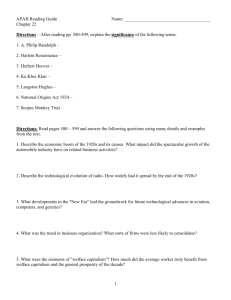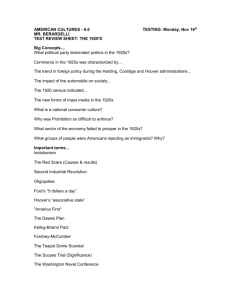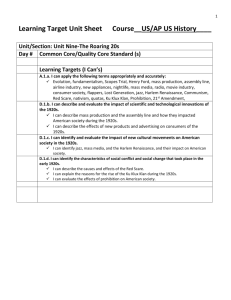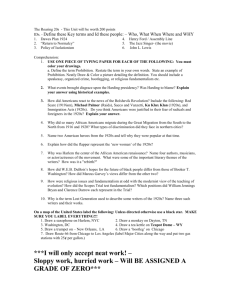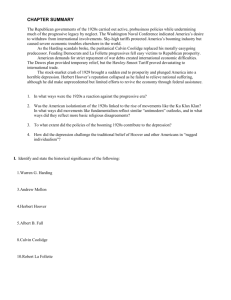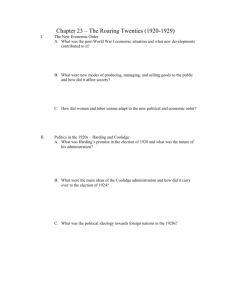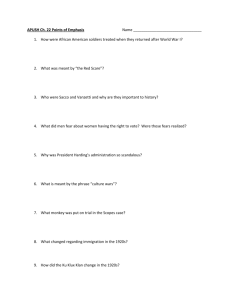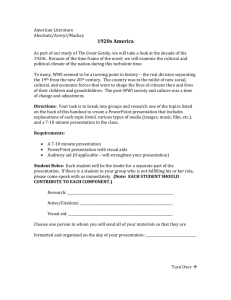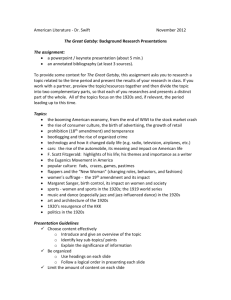Chapter 23 Projects
advertisement
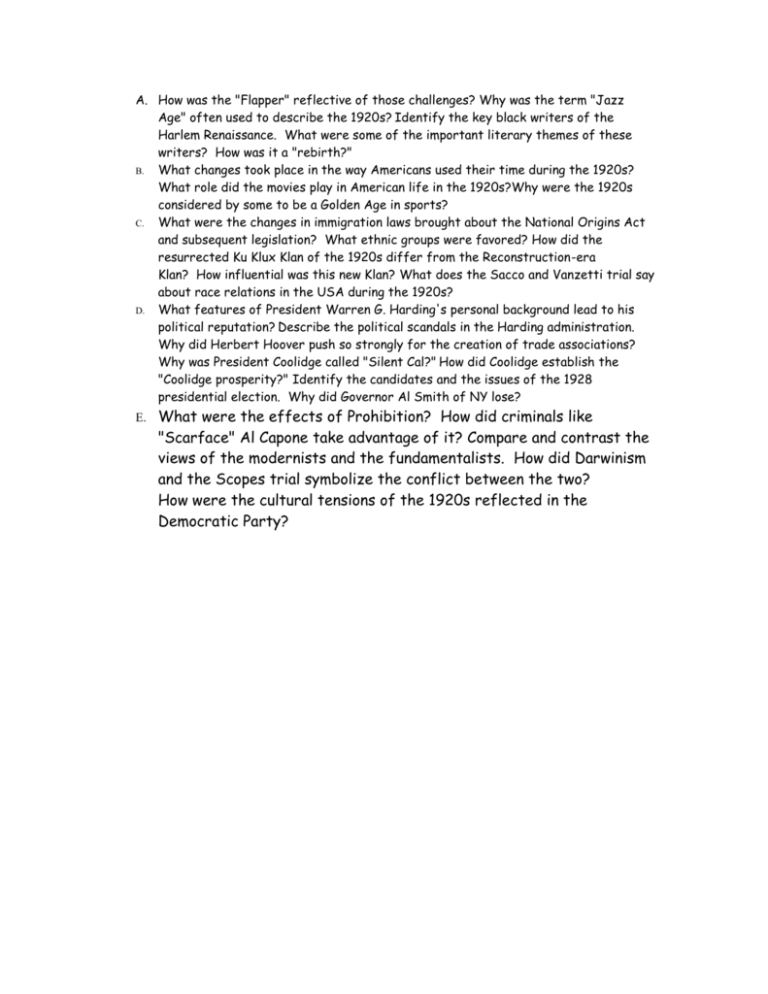
A. How was the "Flapper" reflective of those challenges? Why was the term "Jazz Age" often used to describe the 1920s? Identify the key black writers of the Harlem Renaissance. What were some of the important literary themes of these writers? How was it a "rebirth?" B. What changes took place in the way Americans used their time during the 1920s? What role did the movies play in American life in the 1920s?Why were the 1920s considered by some to be a Golden Age in sports? C. What were the changes in immigration laws brought about the National Origins Act and subsequent legislation? What ethnic groups were favored? How did the resurrected Ku Klux Klan of the 1920s differ from the Reconstruction-era Klan? How influential was this new Klan? What does the Sacco and Vanzetti trial say about race relations in the USA during the 1920s? D. What features of President Warren G. Harding's personal background lead to his political reputation? Describe the political scandals in the Harding administration. Why did Herbert Hoover push so strongly for the creation of trade associations? Why was President Coolidge called "Silent Cal?" How did Coolidge establish the "Coolidge prosperity?" Identify the candidates and the issues of the 1928 presidential election. Why did Governor Al Smith of NY lose? E. What were the effects of Prohibition? How did criminals like "Scarface" Al Capone take advantage of it? Compare and contrast the views of the modernists and the fundamentalists. How did Darwinism and the Scopes trial symbolize the conflict between the two? How were the cultural tensions of the 1920s reflected in the Democratic Party?


